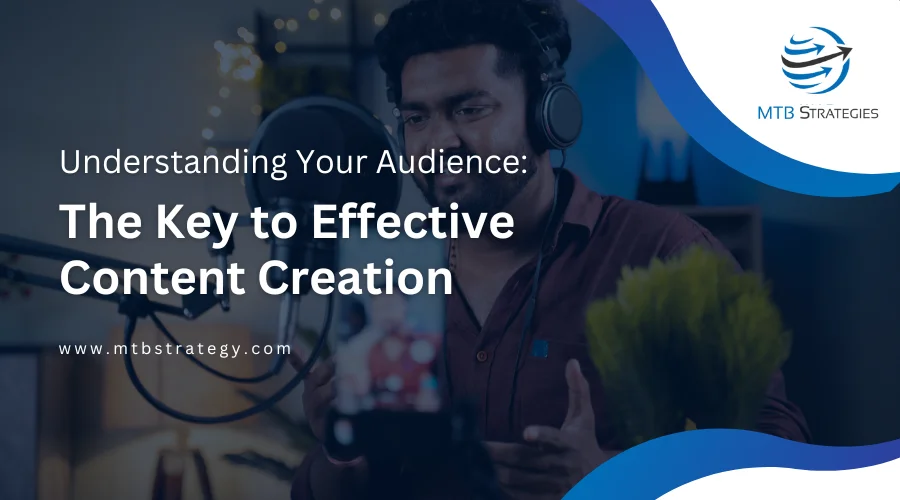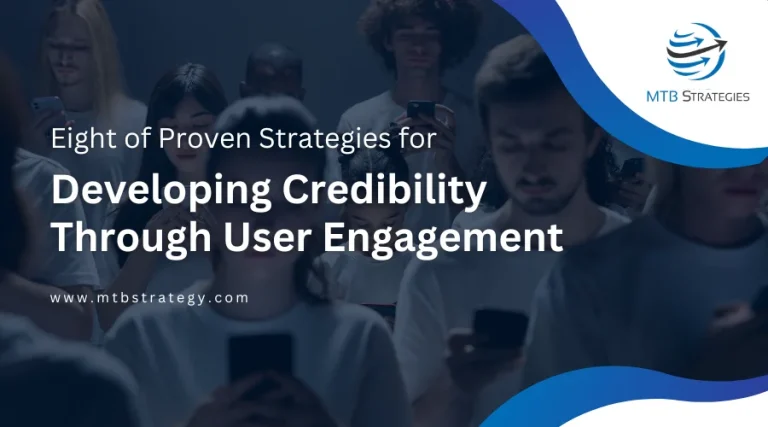It’s easier to get noticed online if you know your audience well. This guide will help you understand your audience better so you can make content that speaks to them. By knowing what your audience likes and their problems, you can create content they’ll find interesting and helpful. Gaining an understanding of your audience facilitates communication. And keep them interested in your words. Elevate Your Success with Our Digital Solutions: From local businesses to large corporations, we drive growth using proven techniques. Our MTB Strategy ensures thriving businesses.
What is a Target Audience?
These are the individuals you wish to reach with your stuff. They’re alike in some ways and have interests and needs similar to what you offer. Understanding your audience means digging into their age, interests, how they act, and what they like. Doing this helps you learn why they do what they do and what they want. With this knowledge, you can make your messages, content, and products fit them better. This way, you can connect with them more deeply and interest them in your offering.
Determine Who Your Target Audience Is and What They Need It’s essential to know your audience and what they like and don’t like so you can make content they’ll love. You must research, look at important information, and talk to your audience directly through surveys, interviews, or social media. By paying attention to what they say and understanding what they want and need, you can make content perfect for them. This helps you build better relationships with them and makes them trust your brand more, which keeps them interested in what you have to offer.
Exploring Different Types of Target Audiences
When you look at different target audiences, you see that people are different. Some groups are based on things like age, gender, and where they live, which gives you essential information about your audience. Then there are psychographics, which look deeper into their personality, values, and what they like, explaining why they buy things.
Understanding how they act, like what they buy and do online, also helps you see how they connect with your brand. Knowing and understanding these different groups enables you to change your messages and marketing plans to fit each group better, which can get more people interested in buying your stuff.
Distinguishing Between Target Audience and Target Market
Understanding the distinction between your intended audience and the market is essential for good marketing plans. Your target market is all the people who might be interested in what you’re selling. However, your target audience is a smaller group within that market.
They’re the ones who are most like the people you want to reach, and they’re the main focus of your marketing. Recognizing this difference helps you make marketing plans that better fit your target audience’s needs and interests, which can make your marketing campaigns work better and be more efficient.
8 Ways to Determine Your Target Audience
Here’s how you can find out more about your audience:
- Do Surveys and Interviews: Ask people questions and study data to learn about who they are and what they like.
- Make Buyer Personas: Create detailed profiles of the people you want to sell to based on things like their age and interests.
- Check Out Your Competition: Look at what other companies are doing to see if there are any groups of people they’re missing.
- Keep an Eye on Social Media: Listen to what people are talking about online to learn their interests and problems.
- Look at Your Website Data: Use tools like Google Analytics to see what people do on your website and what they like.
- Join Online Groups: Take part in online communities where your audience hangs out to learn more about them.
- Study Keywords: Find out what words people use when they search for things related to your business.
- Keep Testing: Always check how your targeting tactics are effective and adapt to what you find out.
How to Reach Your Target Audience
After you know your target audience, the next step is to plan to reach them well. Picking the right ways to talk to them is essential. Whether on social media, sending personalized emails, making exciting content, or showing ads, you must pick what works best for your audience.
It’s all about understanding where your audience spends time online and what kind of stuff they like. You can make messages that they’ll really like and share them in the right places, which can get them more interested and doing what you want them to do.
5 Benefits of Knowing Your Target Audience
- Higher Engagement: Targeted content resonates more strongly with your audience, increasing engagement and interaction.
- Improved Conversion Rates: Understanding your audience’s needs enables you to provide answers that address their pain points, leading to higher conversion rates.
- Enhanced Brand Loyalty: You build trust and loyalty over time by demonstrating an understanding of your audience’s preferences and values.
- Cost Efficiency: Targeted marketing efforts are more cost-effective, as they focus resources on the most promising segments of your audience.
- Innovation Opportunities: Insights gained from understanding your audience can spark new ideas and innovations for products or services that meet unmet needs.
How to Reach Your Audience at the Right Time
Getting the timing right is super important for reaching your audience well. Pay attention to what’s happening, like trends, seasons, and important events that might affect how your audience acts. By keeping up with these things, you can find the best times to connect with your audience when they’re most likely to listen.
Using tools to schedule and analyze helps you figure out the perfect times to share your content or start marketing campaigns for the most significant impact. This way, your messages reach your audience when they’re most interested, making it more likely they’ll pay attention and interact with your brand.
Understanding your intended audience is crucial for successful content creation and marketing efforts. You may produce meaningful connections that drive engagement, loyalty, and business success by identifying your target audience, empathizing with their requirements, and adjusting your strategy accordingly. Invest the time and resources into getting to know your audience, and you’ll reap the rewards of increased visibility, engagement, and conversions. Remember, it’s not just about what you say—it’s about who you’re saying it to.






